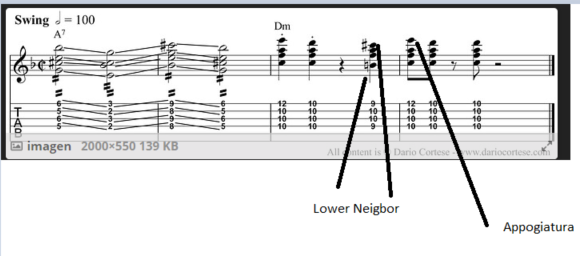It’s another chord functioning as a dominant chord
Just the same way that the fully diminished chords were acting like an A7b9 with no root, this chord is functioning like an A7(9/b13)
In response to @joebegly, I do think it’s VERY useful to name every chord you see because eventually you’ll find that you’ve memorized them as different voice leading combinations.
Also, when you’re doing chord melody stuff like this it doesn’t make a whole lot of sense to describe the chords from the bottom up so much as how they’re functioning. Whoever was playing this was definitely thinking top down, not bottom up. In other words, they were thinking “I need a dominant chord with a c sharp on top and a b13.” The b is essentially incidental. The top two voices are already an ‘a’ and a ‘c#’ and you don’t really want to double any voices when you’re doing this kind of chord melody playing so the ‘b’ is really just there because it’s the only diatonic note that’s easy to grab with those top three notes
There are a few scales that you can get A B C# F from, but the most obvious one is d melodic minor. This chord is based on the 5th mode of melodic minor. Most people call this scale “mixolydian b6”
A quick PS This chord doesn’t actually have a ‘g’ in it which is the 7th of the A7 chord. If you drop the a on the second string down to g the passage will have a slightly stronger pull (which isn’t necessarily better or worse, just different)



